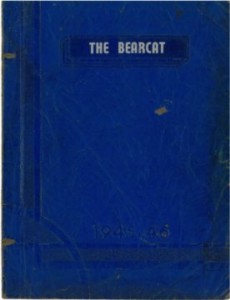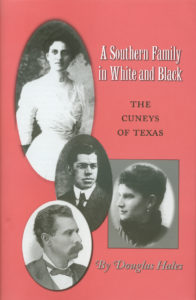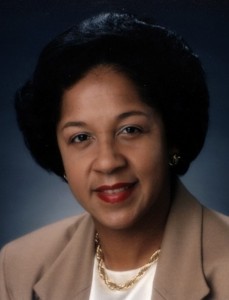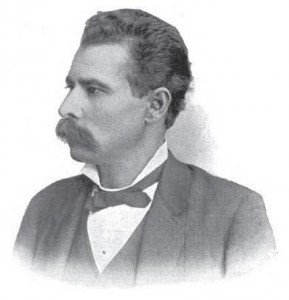3 Africans in Mexico City Grave Tell Stories of Slavery’s Toll
The men might have been among the earliest to be stolen from their homeland and brought to the Americas.
Image: The skulls and modified teeth of three people taken from Africa and buried hundreds of years ago in a mass grave in Mexico City. (Credit: R. Barquera & N. Bernal)
(The New York Times) The three skulls were unlike hundreds of others in the 16th-century mass grave uncovered at the San José de los Naturales Royal Hospital in Mexico City. Their front teeth were filed decoratively, perhaps as a ritual custom, unlike those of “los naturales,” the Indigenous people who made up the majority of bodies at the colonial burial site. Archaeologists concluded the three individuals were most likely enslaved Africans, but they needed more evidence to be certain.
Now, researchers have extracted genetic information from the individuals’ teeth, confirming they were Africans, perhaps among the earliest to be stolen from their homeland and brought to the Americas.
“We studied their whole skeletons, and we wanted to know what they were suffering from, not only the diseases but the physical abuse too so we could tell their stories,” said Rodrigo Barquera, a graduate student at the Max-Planck Institute for the Science of Human History in Germany. “It has implications in the whole story of the colonial period of Mexico.”
The findings, published Thursday in Current Biology, offer a glimpse into these people’s lives before their forced voyages and add insight into the infectious diseases that the trans-Atlantic slave trade may have brought into the New World. (more)
Film: “The Great Yates”
 The 1985 Jack Yates High School football team is considered by many as the best high school team in prep football-rich Texas History. Now, Dallas producers Don and Jocelyn Pinkard have teamed with award-winning director Byron Hunter to bring the story of the Lions magical season to the screen in a one-hour documentary, “The Great Yates.”
The 1985 Jack Yates High School football team is considered by many as the best high school team in prep football-rich Texas History. Now, Dallas producers Don and Jocelyn Pinkard have teamed with award-winning director Byron Hunter to bring the story of the Lions magical season to the screen in a one-hour documentary, “The Great Yates.”
The film has been selected for viewing in the 2020 National Black Film Festival scheduled for May 20-23 in Houston, however because of the COVID-19 crisis the event will be held virtually.
Yates, a perennial Texas high school football power, and one of the few remaining historically black high schools in Texas had challenged for state championship honors for years in the University Interscholastic League, but had failed to win it all. However, during segregation, the storied program was a dominant force in the all-Black Prairie View Interscholastic League, where Yates won four state championships in seven appearances in the big game, three under the great Pat Patterson.
In 1985, the team achieved its potential and steamrolled the state in legendary fashion. This historic season culminated for Yates in an epic showdown and victory over the reigning kings of Texas high school football, the Odessa Permian Panthers of “Friday Night Lights” fame.
The team, coached by Luther Booker, featured running back Johnny Bailey who would be a 1993 Phoenix Cardinals’ Pro Bowl kick returner and DE/LB Melvin Foster, who would be the state’s top college recruit in 1986.
The Jack Yates’ 1985 season has been hailed as the greatest single season in the history of Texas high school football. The team was voted Texas High School Football “Team of the Decade for the 1980s” by the Houston Chronicle and Dave Campbell’s Texas Football magazine (the bible of high school football in the state of Texas).
“We are looking forward to showing the film in the Houston area,” said Don Pinkard, a Dallas native as are Jocelyn and Hunter. “There is a tremendous amount of interest from people so far. Over 6,000 people have already viewed the trailer and the comments have been extremely positive.”
Watch the trailer here.
Related video: “A Brief History: The Original Jack Yates Colored High.”
The Bearcat, 1945-46: (Galveston) Central High School’s First Yearbook
 The Galveston and Texas History Center collects and preserves yearbooks from the island’s public and private schools. Among our most treasured yearbooks are those from Galveston’s Central High School, the first Black high school in the state of Texas. Until recently, our holdings of The Bearcat only went back to 1955. Thanks to a generous donor, we can now preserve and make available the first published yearbook from Central from the 1945-46 school year. The 1945-46 Bearcat will be available for the public to view in the History Center reading room as soon as the library reopens.
The Galveston and Texas History Center collects and preserves yearbooks from the island’s public and private schools. Among our most treasured yearbooks are those from Galveston’s Central High School, the first Black high school in the state of Texas. Until recently, our holdings of The Bearcat only went back to 1955. Thanks to a generous donor, we can now preserve and make available the first published yearbook from Central from the 1945-46 school year. The 1945-46 Bearcat will be available for the public to view in the History Center reading room as soon as the library reopens.
Samuel Collins III, a Rosenberg Library Trustee, recently donated a copy that had been passed down through his family so that others could access it at the Rosenberg facility. Collins’ great-uncle, Edwin Johnson, and his wife, Dorothy Womack Johnson, were both seniors in the Central High School class of 1946 and appear in the yearbook. Next to Edwin’s name are his nickname – “Pluto”, hobby – sports, and educational interest – business. And next to Dorothy’s name are her nickname – “Dot”, hobby – bicycling, and educational interest – nursing. (more)
TIPHC Bookshelf
 Published scholarship on black history in Texas is growing and we’d like to share with you some suggested readings, both current and past, from some of the preeminent history scholars in Texas and beyond. We invite you to take a look at our bookshelf page – including a featured selection – and check back as the list grows. A different selection will be featured each week. We welcome suggestions and reviews. This week, we offer, “A Southern Family in White and Black, The Cuneys of Texas,” by Douglas Hales.
Published scholarship on black history in Texas is growing and we’d like to share with you some suggested readings, both current and past, from some of the preeminent history scholars in Texas and beyond. We invite you to take a look at our bookshelf page – including a featured selection – and check back as the list grows. A different selection will be featured each week. We welcome suggestions and reviews. This week, we offer, “A Southern Family in White and Black, The Cuneys of Texas,” by Douglas Hales.
The complex issues of race and politics in nineteenth-century Texas may be nowhere more dramatically embodied than in three generations of the family of Norris Wright Cuney, mulatto labor and political leader. Douglas Hales explores the birthright Cuney received from his white plantation-owner father, Philip Cuney, and the way his heritage played out in the life of his daughter Maud Cuney-Hare. This intergenerational study casts light on the experience of race in the South before Emancipation, after Reconstruction, and in the diaspora that eventually led cultural leaders of African American heritage into the cities of the North.
Most Texas history books name Norris Wright Cuney as one of the most influential African American politicians in nineteenth-century Texas, but they tell little about him beyond his elected positions. In The Cuneys, Douglas Hales not only fills in the details of Cuney’s life and contributions but places him in the context of his family’s generations.
A politically active plantation owner and slaveholder in Austin County, Philip Cuney participated in the annexation of Texas to the United States and supported the role of slavery and cotton in the developing economy of the new state. Wealthy and powerful, he fathered eight slave children whom he later freed and saw educated. Hales explores how and why Cuney differed from other planters of his time and place.
He then turns to the better-known Norris Wright Cuney to study how the black elite worked for political and economic opportunity in the reactionary period that followed Reconstruction in the South. Cuney led the Texas Republican Party in those turbulent years and, through his position as collection of customs at Galveston, distributed federal patronage to both white and black Texans. As the most powerful African American in Texas, and arguably in the entire South, Cuney became the focal point of white hostility, from both Democrats and members of the “Lily White” faction of his own party. His effective leadership won not only continued office for him but also a position of power within the Republican Party for Texas blacks at a time when the party of Lincoln repudiated African Americans in many other Southern states. From his position on the Galveston City Council, Cuney worked tirelessly for African American education and challenged the domination of white labor within the growing unions.
Norris Wright Cuney’s daughter, Maud, who was graced with a prestigious education, pursued a successful career in the arts as a concert pianist, musicologist, and playwright. A friend of W. E. B. Du Bois, she became actively involved in the racial uplift movement of the early twentieth century. Hales illuminates her role in the intellectual and political “awakening” of black America that culminated in the Harlem Renaissance of the 1920s. He adroitly explores her decision against “passing” as white and her commitment to uplift.
Through these three members of a single mixed-race family, Douglas Hales gives insight into the issues, challenges, and strengths of individuals. His work adds an important chapter to the history of Texas and of African Americans more broadly.
This Week in Texas Black History
May 11
 In 1994, Dr. Carol Surles becomes first African-American president of Texas Women’s University in Denton. A native of Florida, Surles earned her undergraduate degree in psychology at Fisk University in Nashville, her master’s degree in counseling from Chapman College in California, and her doctoral degree in education from the University of Michigan-Ann Arbor.
In 1994, Dr. Carol Surles becomes first African-American president of Texas Women’s University in Denton. A native of Florida, Surles earned her undergraduate degree in psychology at Fisk University in Nashville, her master’s degree in counseling from Chapman College in California, and her doctoral degree in education from the University of Michigan-Ann Arbor.
May 12

On this day in 1846, Norris Wright Cuney was born on a plantation near Hempstead. Cuney was the child of a white planter, Philip Minor Cuney and his slave, Adeline Stuart. Norris was educated at the Wylie Street School for blacks in Pittsburgh, Pennsylvania. He returned to Texas following the Civil War and settled in Galveston, where he became active in the Union League, the political arm of Radical Republican Reconstruction in Texas. Cuney became a powerful figure in Texas’ Republican circles, especially in Galveston and was appointed secretary of the Republican State Executive Committee in 1873, the highest party rank achieved by a Southern African American in the remaining decades of the century. In 1886, he was named the Republican Party’s national committeeman from Texas.
May 15

Robert Hughes, the most successful high school basketball coach in Texas history, was born this day in 1928 in Bristow, Oklahoma. After a tour in the U.S. Army during the Korean Conflict, Hughes played college basketball at Texas Southern University, gaining acclaim as a prolific scorer. In 1958, he became head coach at Fort Worth’s segregated high school I.M. Terrell. During his 16 years there (1958-1973), Hughes’ teams compiled a 373-84 record and won three Prairie View Interscholastic League (PVIL) state championships (1963, 1965 & 1967). The PVIL was the governing body for academic and athletic competitions for Texas’ African American high schools. With integration of public schools during 1973, Hughes became coach at Fort Worth Dunbar High School, where he remained until he retired in 2005. During his tenure at Dunbar, the “Flying Wildcats” won two state championships (1993 & 2003), and on three occasions finished second in the state. His teams made thirty consecutive trips to the state championship, and only had one losing season.
May 15

On this day in 1969, Dallas Cowboys’ great Emmitt Smith was born in Pensacola, Fla. Smith played collegiately at Florida, where he set 58 school records, then was the Cowboys first round pick (number 17 overall) in the National Football League‘s 1990 draft. He was an eight-time Pro Bowler, a four-time first-team All-Pro and led the league in rushing four times (1991, 1992, 1993, 1995). In 2002, Smith passed Chicago Bears great Walter Payton and became the league’s all-time rushing leader on an 11-yard gain in the fourth quarter of the Cowboys’ 17-14 loss to the Seattle Seahawks. Smith retired two years later with 18,355 yards to Payton’s 16,726. He was inducted to the Cowboys’ Ring of Honor in 2005 and into the Pro Football Hall of Fame in 2010.
Blog: Ron Goodwin, Ph.D., author, PVAMU history professor
Ron Goodwin is an assistant professor of history at Prairie View A&M University. Even though he was a military “brat,” he still considers San Antonio home. Like his father and brother, Ron joined the U.S. Air Force and while enlisted received his undergraduate degree from Texas Lutheran University in Seguin, Texas. After his honorable discharge, he completed graduate degrees from Texas Southern University. Goodwin’s book, Blacks in Houston, is a pictorial history of Houston’s black community. His most recent book, Remembering the Days of Sorrow, examines the institution of slavery in Texas from the perspective of the New Deal’s Slave Narratives.
Recent Posts
It’s OK now
Hopefully, this COVID-19 pandemic will end soon, and life can get back to normal. At the very least, as a society, I hope we’ll learn how to live with it. But one day, our intelligentsias will analyze every governmental action since February and March of 2020, especially those of the President. Recent policies have addressed the numbers of individuals who are out of work because of the “stay at home” directives. It’s been called… (more)
WWJD
Several years ago, these letters, “WWJD?” seemed to be everywhere. We all know they represent “What Would Jesus Do?” I think these letters and the question were meant to challenge society to consider the moral implications of their everyday decisions. Now in this new COVID-19 reality, WWJD may have new meaning. Since my father…(more)
Submissions wanted
Historians, scholars, students, lend us your…writings. Help us produce the most comprehensive documentation ever undertaken for the African American experience in Texas. We encourage you to contribute items about people, places, events, issues, politics/legislation, sports, entertainment, religion, etc., as general entries or essays. Our documentation is wide-ranging and diverse, and you may research and write about the subject of your interest or, to start, please consult our list of suggested biographical entries and see submission guidelines. However, all topics must be approved by TIPHC editors before beginning your research/writing.
We welcome your questions or comments. Please contact Michael Hurd, Director of TIPHC, at mdhurd@pvamu.edu.
